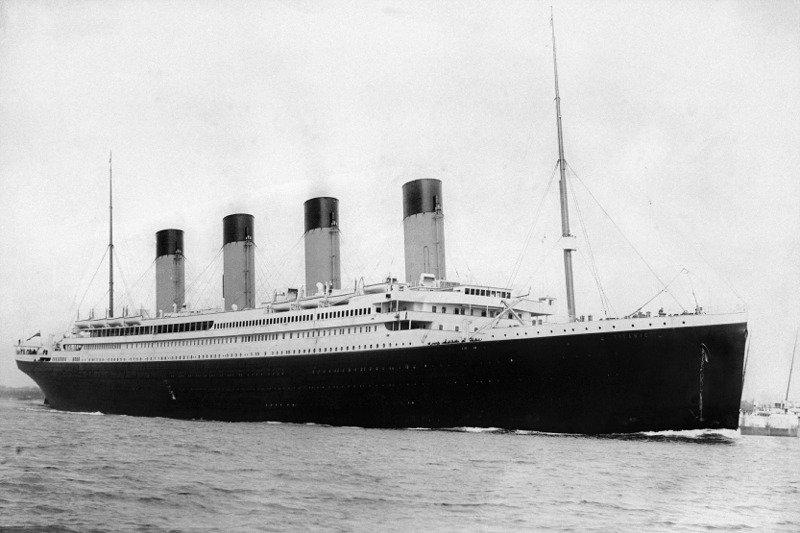Did Morgan Robertson’s 'Futility' Predict the Titanic Disaster?

In 1898, author Morgan Robertson published a novella called Futility (later republished as The Wreck of the Titan). Futility tells the tale of a purportedly unsinkable ocean liner – Titan – that hits an iceberg and sinks, killing most of its passengers.
Futility seemed to have predicted the Titanic disaster – 14 years before the fact – in a most uncanny way.
In this article, we examine some of the intriguing coincidences involving Titanic and the fictional Titan.
Both Ships were British Passenger Liners Billed as the Largest Ships Afloat
RMS Titanic was built in Belfast by Harland and Wolff and was owned and operated by White Star Line. It took 2 years to build, had 7 decks, was 882.75 feet long and weighed approximately 46,329 tons. It was the largest ship in the world at the time.
Titan was described in Futility as being the largest ship afloat. It was 800 feet long and weighed 45,000 tons.
Both ships were equipped with a triple propeller propulsion system, which was believed to have been a design innovation unique to Titanic.
Both Ships Were Said to Be Unsinkable
Titanic and the fictional ship Titan were both described as unsinkable. Titanic had a double hull and 16 watertight compartments designed to keep it afloat if damaged. These compartments were separated by 15 transverse bulkheads. Futility describes Titan as having 19 watertight compartments.
Both ships were designed to survive a head-on collision with an iceberg, a constant threat at the time. It was assumed in both cases that, in the event of such a collision, Titanic and Titan would sustain damage to the bow but remain afloat.
Both Ships Had a Shortage of Lifeboats
The Titanic was designed to accommodate 64 lifeboats – each designed to carry 65 people, more than enough for all the passengers and crew. However, White Star Line, who believed the ship was unsinkable, decided to reduce the number of lifeboats on board to 20 to reduce clutter on deck. This decision complied with the Board of Trade regulations at the time.
Titanic’s chief designer, Thomas Andrews, was on board at the time of the disaster and decided to go down with the ship. J. Bruce Ismay, chairman and managing director of the White Star Line, managed to get into a lifeboat and survived the tragedy, his reputation permanently damaged.
Futility outlines a similar scenario for Titan: “Unsinkable–indestructible, she carried as few boats as would satisfy the laws. These, twenty-four in number, were securely covered and lashed down to their chocks on the upper deck . . .” [1]
Both Ships Sank In April Crossing The Atlantic on Their Maiden Voyages
Titanic struck an iceberg on its maiden voyage in cold weather on the night of April 14, 1912, at 11:40 p.m. It sank 2 hours and 40 minutes later. Titanic had 2,209 passengers and crew aboard. 1,514 perished in the disaster.
In Futility, Titan struck an iceberg during its maiden voyage on a cool April evening. Titan was said to have carried around 3,000 passengers and crew.
Both ships had the capacity to carry more than 3,000 passengers and crew.

Both Ships Sank Close to the Coast of Newfoundland
The wreck of Titanic, discovered in 1986, lies on the floor of the Atlantic Ocean approximately 400 miles off the coast of Newfoundland.
Titan was said to have foundered approximately 500 miles off the coast of Newfoundland.
What did Morgan Robertson Feel About The Coincidences
Robertson never regarded himself as a seer: “I know what I’m writing about, that’s all,” he said.[2]
Robertson released another book in 1905 about a submarine equipped with an intriguing device called a periscope. He would later claim that he had invented a prototype periscope but was refused a patent.
Morgan Robertson released more than thirty novels and short stories before his untimely death in 1915 at the age of fifty-three.
References
- Robertson, M. (1898). Futility. The Outlook Company. https://archive.org/details/futilitywreckoft00robeiala (Accessed February 17, 2023).
- Hasan, H. (2012) Author ‘predicts’ Titanic sinking, 14 years earlier, Time. Time. Available at: https://newsfeed.time.com/2012/04/14/author-predicts-titanic-sinking-14-years-earlier/ (Accessed: February 17, 2023).
- Ishak, N. (2021) How the unparalleled size and grandeur of the Titanic may have sealed its fate, All That’s Interesting. All That’s Interesting. Available at: https://allthatsinteresting.com/how-big-was-the-titanic (Accessed: February 17, 2023).
- McQuigge, M. (2012) Author’s fictional Titan hit iceberg years before the titanic sank, Yahoo! News. The Canadian Press. Available at: https://news.yahoo.com/authors-fictional-titan-hit-iceberg-years-titanic-sank-083700949.html?guccounter=1 (Accessed: February 17, 2023).
- “The Titanic: Lifeboats” History on the Net
© 2000-2023, Salem Media. Available at: https://www.historyonthenet.com/the-titanic-lifeboats (Accessed February 18, 2023). - Lifeboats of the Titanic (no date) Wikipedia. Wikimedia Foundation. Available at: https://en.wikipedia.org/wiki/Lifeboats_of_the_Titanic (Accessed: February 18, 2023).
- “Was Titanic Unsinkable: Why Did People Think It Was?” History on the Net
© 2000-2023, Salem Media. Available at: https://www.historyonthenet.com/the-titanic-why-did-people-believe-titanic-was-unsinkable (Accessed February 18, 2023


